SEO is constantly changing, and one major shift is the rise of zero-click searches. This trend is reshaping strategies across industries.
But what are zero-click searches, and why do they matter? This happens when users find answers directly on Google without clicking any website. This impacts visibility, traffic, and SEO efforts.
Want to know how zero-click searches affect SEO in 2025? Keep reading to learn how brands can adapt and stay ahead.
What is Zero-Click Search?
Let’s start with a simple definition of zero-click searches (ZCS). These happen when Google shows answers directly on the search results page (SERP). So instead of scrolling through websites, they get what they need at the top of the SERP and move on.
Google does this through AI Overviews (AIOs), which appear at the top of the SERP. Google isn’t clear on when they show up—they appear only when its systems determine that generative responses can be especially helpful. They usually show up for general questions.
The good news? AIOs mainly affect informational searches, not transactional ones. If someone searches for a product, service, or brand, they’ll still see the usual SERP. For now, businesses don’t need to worry about losing high-intent buyers. But who knows what the future holds?
Common Types of Zero Click Searches
Search engines now give instant answers right on the results page, so you don’t always need to click a link. These zero-click results come in different formats, each designed to deliver information quickly and conveniently. Here are some common types:
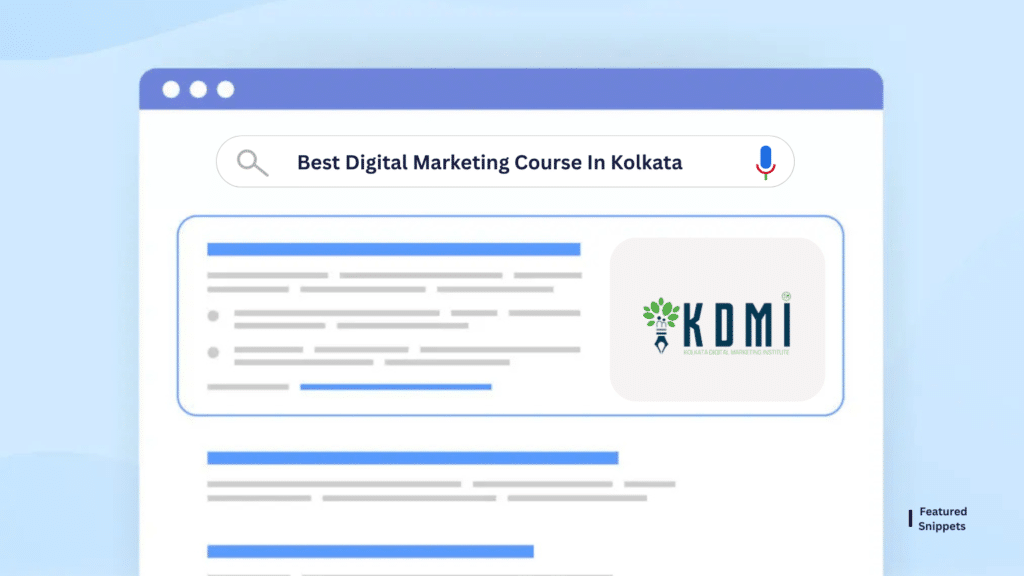
Featured Snippets: Ever noticed a quick answer box at the top of Google? That’s a featured snippet! It gives you instant answers in paragraphs, lists, or tables, so you don’t even need to click a link. Super handy for quick info!
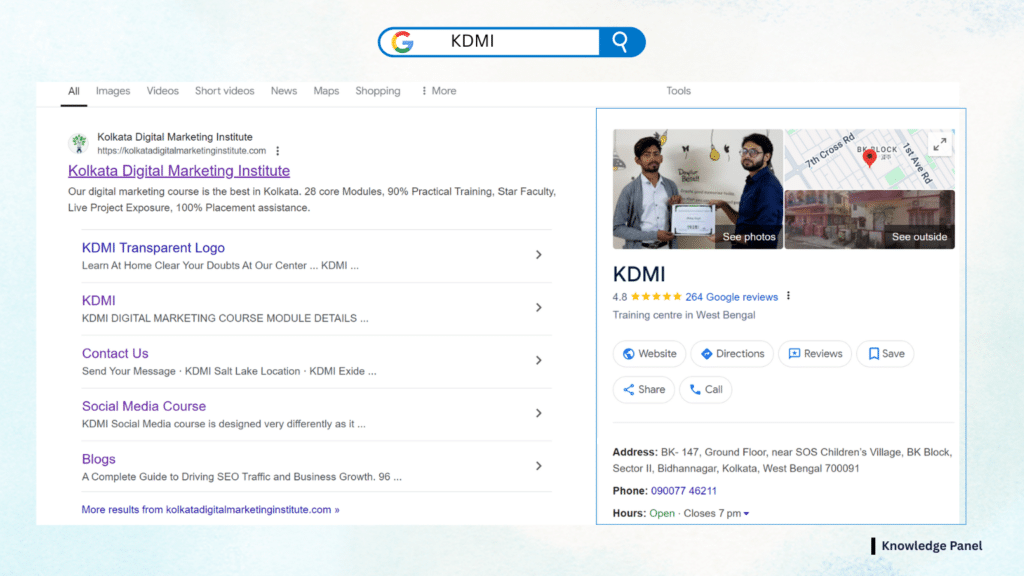
Knowledge Panels: These show up on the right side of Google with details about famous people, places, or organizations. Pulled from trusted sources like Wikipedia, they give you a snapshot of what you need to know at a glance.

Direct Answers: Ask Google a simple question like, “How hot will it be today?” or “How many feet are in 36 inches?” and boom—your answer appears right at the top. No clicks are needed!

People Also Ask (PAA): Ever searched for something and seen a box with related questions? That’s the PAA section. Click on a question, and it expands with a short answer, making it easy to keep exploring without leaving Google.

Local Packs: Looking for a nearby coffee shop? Google shows a map with business listings, reviews, and directions. No need to scroll through websites—just tap and go!
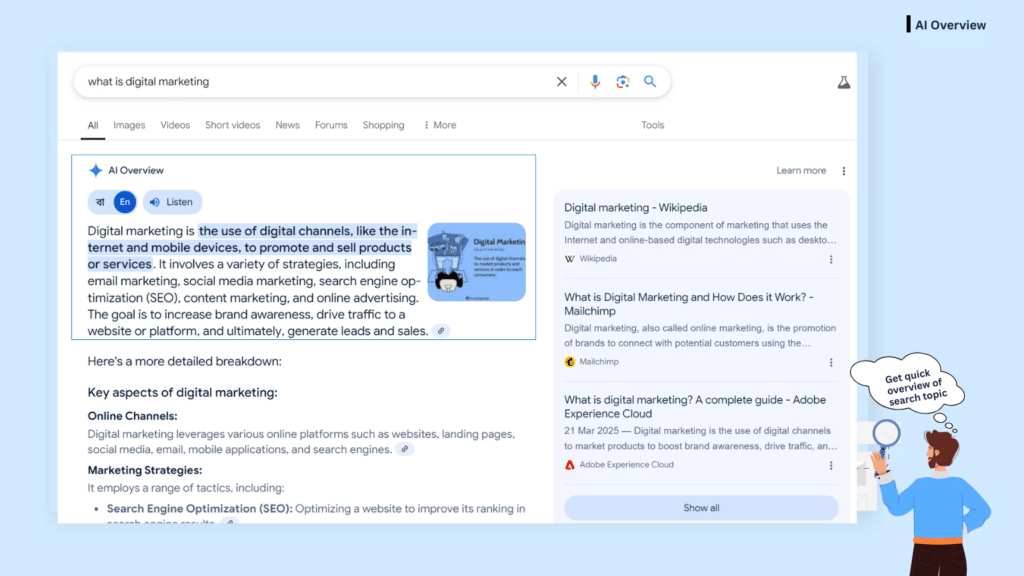
AI Overviews: Google’s AI now summarizes search topics right at the top. It pulls together key info so you can get a quick overview without diving into multiple articles.
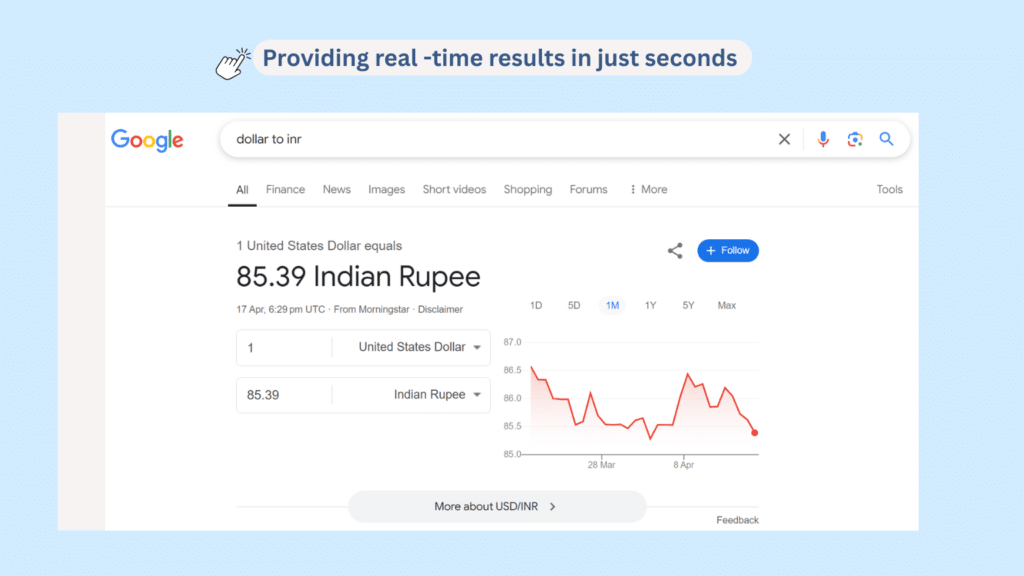
Calculators & Converters: Need to do quick math or convert dollars to euros? Google’s built-in tools handle it instantly, saving you a trip to a separate website.
Definitions: Searching for the meaning of a word? Google shows you the dictionary definition right there, complete with pronunciation and usage examples. No need to open a dictionary site!
How to Optimize for Zero-Click Searches in 2025
Search is evolving, and zero-click results are taking over. Instead of driving traffic to websites, Google often provides answers directly on the search results page. But that doesn’t mean SEO is dead—it just means you need to adapt.
If you want your content to stay visible in 2025, here’s how to make zero-click searches work for you instead of against you.

1. Win the Featured Snippet Spot
Ever searched for something and seen a short answer at the top of Google? That’s a featured snippet—the prime real estate of search results. If your content lands there, it’s the first thing people see.
Here’s how to increase your chances of grabbing a featured snippet:
- Answer common questions related to your business.
- Keep it short and clear 40-60 words work best.
- Use lists, bullet points, or tables as Google loves structured answers.
- Include keywords naturally in your headings and subheadings.
Winning a featured snippet means more visibility, more credibility, and more potential traffic—even if people don’t always click through.
2. Get Featured in “People Also Ask” (PAA) Boxes
You’ve seen them—the expandable “People Also Ask” questions under search results. Clicking on one reveals a short answer pulled from a website like yours.
Want your content in PAA boxes? Here’s how:
- Add FAQ sections to your blog posts and service pages.
- Write in a natural, conversational tone—like how real people ask questions.
- Use long-tail keywords (e.g. instead of SEO tips, try What are the best SEO tips for beginners?).
Appearing in PAA boxes means more exposure—even if users don’t visit your site.
3. Use Schema Markup to Stand Out
Schema markup is a behind-the-scenes SEO hack that helps search engines understand your content better. It also increases your chances of showing up in rich results like:
- FAQ snippets (perfect for PAA optimization).
- Review stars (great for eCommerce & service businesses).
- Event details (for webinars, concerts, or launches).
- How-to guides (step-by-step instructions that Google loves).
Adding schema markup may sound technical, but Google’s Structured Data Markup Helper makes it easy—even for beginners. Just be sure to test your schema before publishing to make sure it works!
4. Make Visual Content a Priority
Google isn’t just about text anymore—images and videos are dominating search results. You might have noticed that YouTube videos, infographics, and image packs are showing up more often when you search for something.
To increase your chances of ranking in visual search:
- Add high-quality images and infographics to your content.
- Create short, informative videos and upload them to YouTube.
- Use descriptive file names, alt text, and captions so search engines can understand your visuals.
People engage more with visuals, and Google is rewarding content that grabs attention.
5. Keep Your Content Fresh
Google loves fresh, updated content. If your blog posts and pages are outdated, you could be missing out on valuable search visibility.
Here’s what you can do:
- Update key pages regularly (guides, FAQs, and top-performing blogs).
- Fix broken links and outdated stats.
- If you make major updates, republish your content with a recent date to signal freshness.
A small refresh can breathe new life into old content and help you rank higher in search results.
6. Build Brand Authority & Trust
Let’s be real—people are more likely to engage with content from brands they recognize and trust. The stronger your brand presence, the more likely Google is to feature your content.
Here’s how to build authority in your niche:
- Publish high-quality, useful content consistently.
- Engage with your audience on social media and industry forums.
- Earn backlinks from reputable websites.
- Network with industry leaders and collaborate on guest posts.
When search engines see your brand everywhere, they’re more likely to trust and feature your content.
7. Optimize for Voice Search & Long-Tail Keywords
People aren’t just typing short keywords anymore. They’re asking full questions, especially with voice search on the rise.
For example:
Instead of SEO tips, we can use What are the best SEO strategies for small businesses?
Long-tail keywords help your content rank in voice searches, PAA boxes, and AI-generated search results. Just make sure they sound natural—don’t force keywords into your writing.
So, now it is clear that nowadays SEO isn’t just about getting clicks anymore—it’s about showing up where it matters. Zero-click searches are changing the game, but if you optimize your content the right way, you can stay visible and keep your audience engaged.
So, are you ready to adapt? Start optimizing now, and make Google work for you instead of against you!
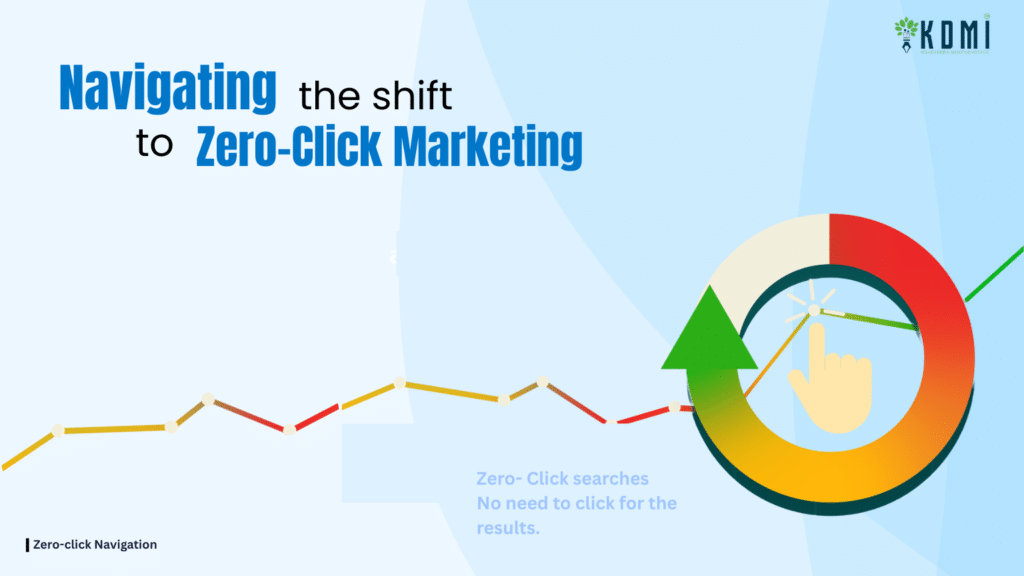
Navigating the Shift to Zero-Click Marketing
Not seeing as many clicks from Google? Don’t panic—it doesn’t mean your efforts aren’t working. It just means the game is changing, and it’s time to pivot.
People today don’t just hang out on search engines. They’re scrolling TikTok, browsing Reddit threads, watching YouTube, diving into Quora answers—and expecting brands to meet them where they are. So your SEO strategy? It needs to go beyond just ranking on Google.
And yes, AI Overviews (AIOs) might mean fewer clicks to your site. But here’s the upside: the people who do click are usually more curious, more interested, and much more likely to convert.
It’s not about chasing every click anymore—it’s about showing up in the right moments, for the right people.
Traffic Feels Good. Conversions Feel Better
We all love seeing traffic go up—it feels like progress. But is it the goal? Not always.
If your business runs on ad revenue or subscriptions, then yes, traffic might still be king. But if you rely on leads or sales? Conversions are what truly matter.
I recently spoke with a client who was excited about the traffic they were getting. But after six months, barely any conversions. For a lead-gen business, that’s a red flag.
The truth is, not all traffic is valuable. What matters more is attracting the right people—the ones ready to take action.
And with more zero-click searches and AI answers in 2025, sometimes you won’t even get the click. But if your brand shows up in those results, you’re still building awareness and trust—which can pay off big when people are ready to convert.
So is traffic still king? Maybe. But the real power lies in quality over quantity.
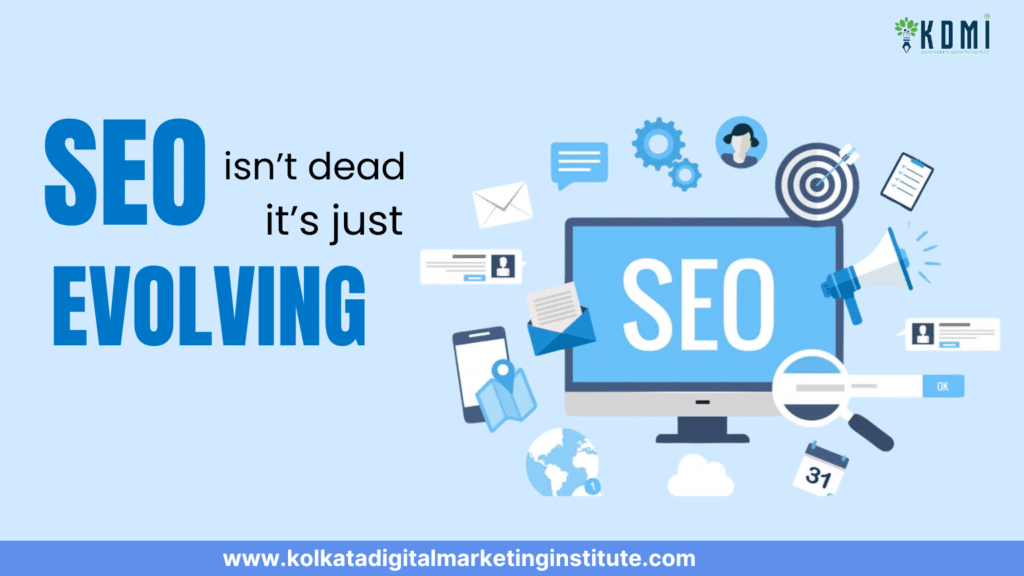
SEO Isn’t Dead—It’s Just Not What It Used to Be
Let’s get one thing straight: SEO is far from dead. But the way it works—and how people discover content—has changed.
With AI Overviews, zero-click searches, and users turning to platforms like TikTok, YouTube, and Reddit for answers, SEO can’t live in a Google-only bubble anymore. If your brand wants to stay visible, it needs to show up across all the places people search, scroll, and explore.
That means evolving your strategy. Focus on creating high-quality, conversational content that answers real questions. Use structured data to support visibility in rich results. Optimize for featured snippets, knowledge panels, and branded search. And don’t forget to show up where your audience already is—social discovery platforms and local listings included.
In 2025, SEO success isn’t just about ranking—it’s about relevance, visibility, and being present wherever your audience is looking.
Wrapping It All Up
Let’s face it—2025 SEO looks different. With zero-click searches, AI summaries, and users turning to TikTok, Reddit, and YouTube for answers, showing up on Google alone isn’t enough anymore.
But this shift isn’t a threat—it’s an opportunity.
You don’t need to chase every click. You just need to be where your audience is, show up with value, and build trust. Whether it’s a snippet, a local listing, or a YouTube result, the goal is simple: help first, convert later.
So no, SEO isn’t dead.
Yes, SEO looks different in 2025—but that’s a good thing. It’s more dynamic, more connected, and more human than ever.
So instead of fighting the shift, lean into it. Adapt your strategy, focus on what matters most, and remember: visibility isn’t just about being seen—it’s about being remembered when it counts.



“Great insights! I really liked the way you explained this topic, very helpful.”